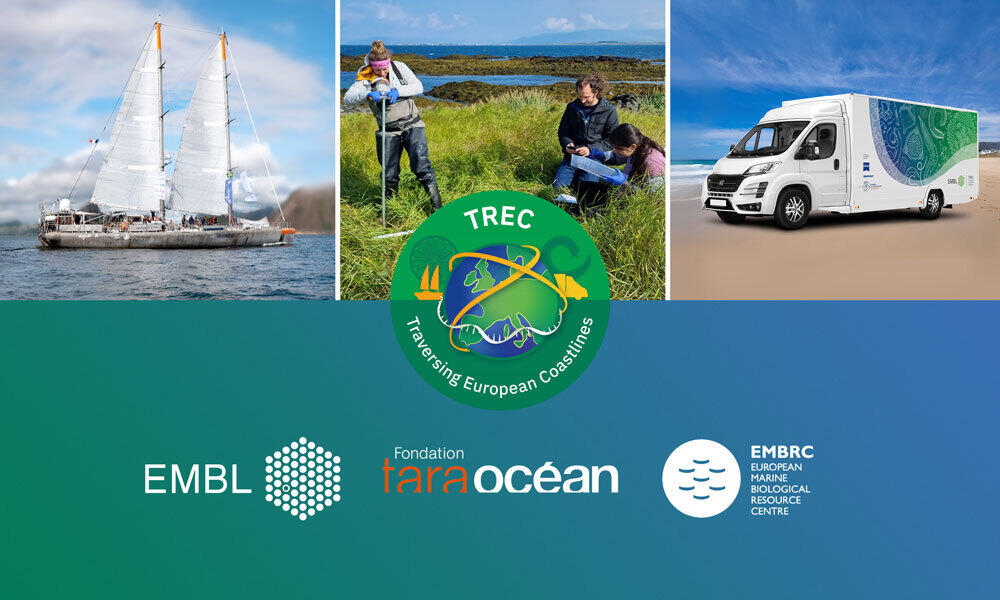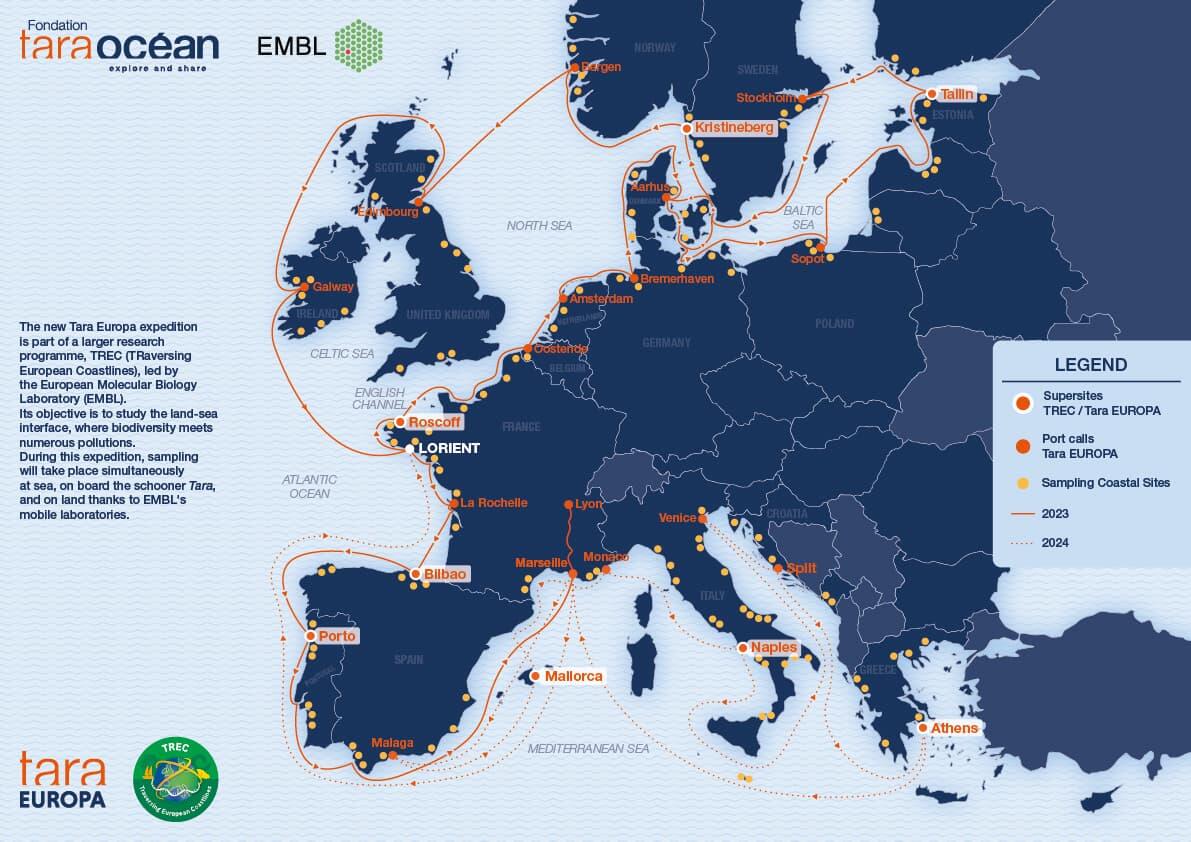Tara visits Bergen during its two-year TREC scientific expedition
Members of the Michael Sars Centre had the exclusive opportunity to visit the research vessel Tara on Friday while the schooner was in Bergen for samples, supplies, and fuel. Afterwards, Tara researchers visited the Centre for a reciprocal tour of our marine facilities.
Main content
The Tara Europa expedition is a two-year study of marine coastal ecosystems covering 25,520km along the European Coastlines as part of TREC (Traversing European Coastlines). The expedition is led by the European Molecular Biology Laboratory (EMBL) in collaboration with the European Marine Biological Research Centre (EMBRC-ERIC), the Tara Ocean Foundation, the Tara OceanS Consortium and involves 70 scientific institutions. The Michael Sars Centre, an EMBL partner, and the Department of Biological Sciences (BIO) at the University of Bergen provided on-the-ground infrastructure while the TREC teams were in Norway, the northernmost point on their two-year voyage. The project, which began in April 2003, is a multidisciplinary study of anthropogenic impacts along 120 land-sea transects on the European coastline.
“We are studying marine biodiversity, and the impact of human activities on coastal communities,” explains Morgane Guillam, bioengineer on Tara. “We have gathered data all over the world during previous expeditions, it is essential to study our own coasts as well.”
During the visit, Michael Sars researchers and technicians were shown around the 36-meter aluminum-hulled schooner, where a rotating team of six scientists alongside eight crew members live in close quarters. Despite the limited space, researchers have access to an impressive array of equipment for sampling and environmental analysis. “I was amazed at how compact the boat is and yet, fully equipped to have sailed and sampled multiple times across the world!” says Aishwarya Ravi, PhD candidate at the Michael Sars Centre.
Inspired by the polar expeditions of legendary Norwegian explorer Fridtjof Nansen, French scientist Jean-Louis Étienne imagined in 1989 a research sailboat able to navigate the icy Antarctic waters. Ever since it was first put in service under its original name Antarctica, renamed Seamaster by second owner Sir Peter Blake before being acquired by Agnès Troublé and her son Étienne Bourgois who renamed it Tara in 2003, the schooner has been dedicated to environmental expeditions and ocean conservation outreach throughout the world.
Over its seven major expeditions, Tara has uncovered more than 100 000 new marine species. All the data produced onboard is made freely available to the scientific community, offering a wealth of future research opportunities for the conservation of the world’s oceans. “Tara is an incredible opportunity for science”, says Emmanuel Boss, Professor of Oceanography at the University of Maine and chief scientist for Tara Europa. He explains that the team conducts up to 50 different analyses at each sampling point. The data collected will be freely available to the scientific community and will contribute to countless research projects over the world.
The Tara Europa mission focuses on biodiversity at all scales, from viruses to medium-sized planktonic organisms such as fish larvae and small jellyfish. The project will also investigate chemical pollutants: from pharmaceutical products to plastics and pesticides, mapping the presence of these compounds is essential to address environmental and public health threats in Norway and over Europe.
“Oceans are the most crucial ecosystems, and we don’t exist without them”, says Aishwarya. “Ocean conservation is highly necessary, and it was inspiring to see this incredible boat participating in global projects using multidisciplinary cutting-edge research approaches!”























